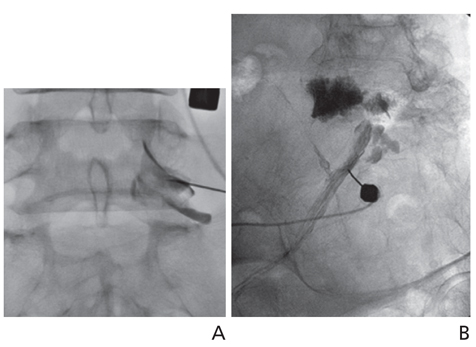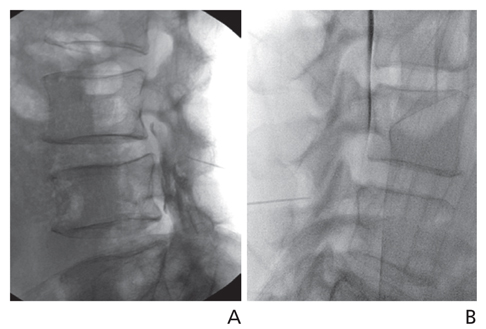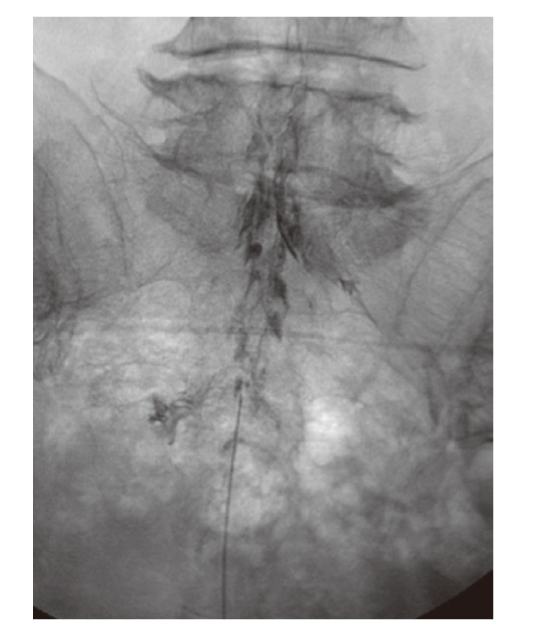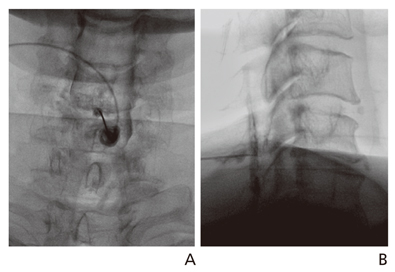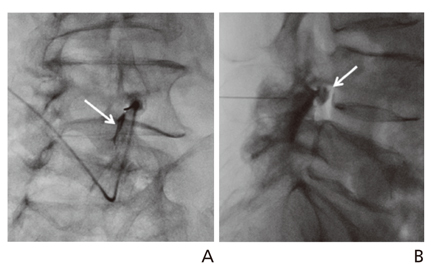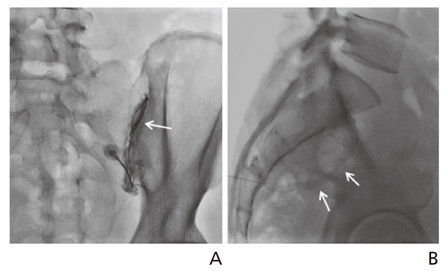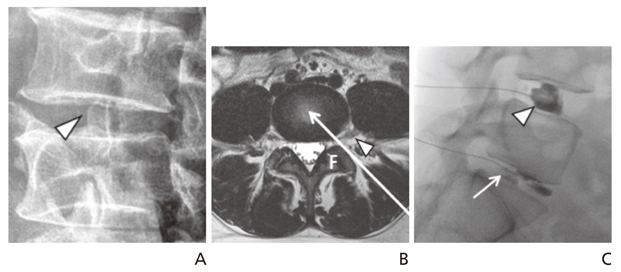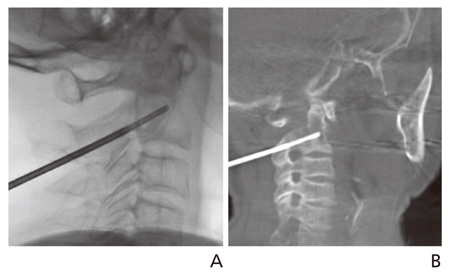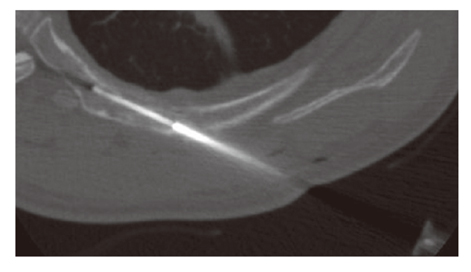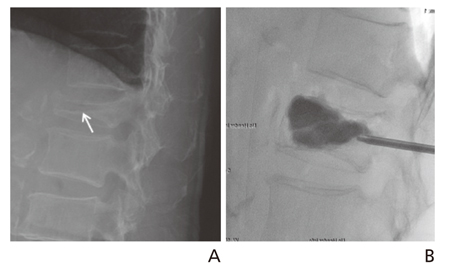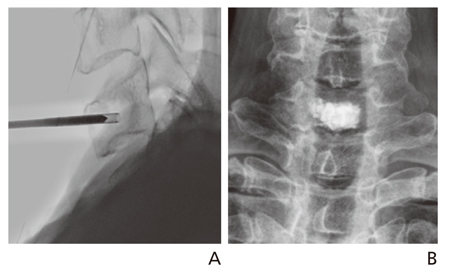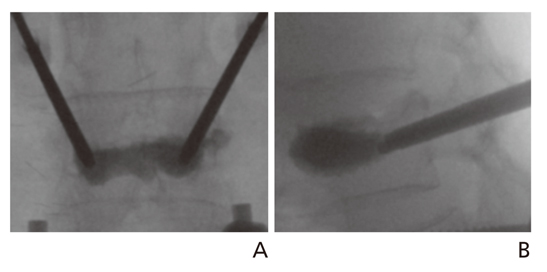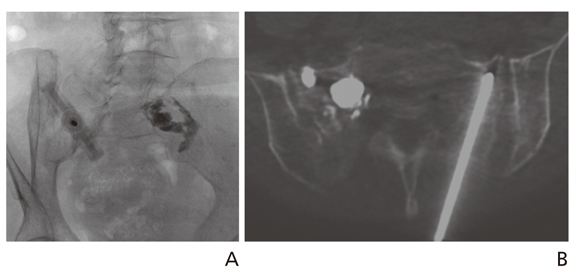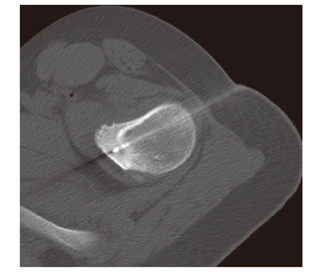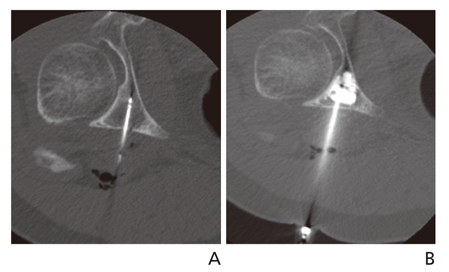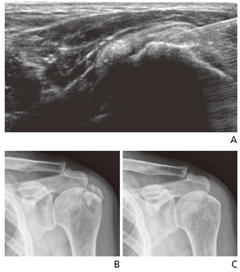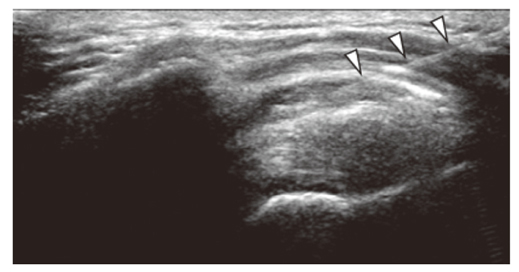J Korean Med Assoc.
2015 Jun;58(6):502-515. 10.5124/jkma.2015.58.6.502.
Musculoskeletal intervention
- Affiliations
-
- 1Department of Radiology and Center for Imaging Science, Samsung Medical Center, Sungkyunkwan University School of Medicine, Seoul, Korea. jwjwkwon@gmail.com
- 2Department of Medical Device Management & Research, SAIHST, Sungkyunkwan University, Seoul, Korea.
- KMID: 2137557
- DOI: http://doi.org/10.5124/jkma.2015.58.6.502
Abstract
- Musculoskeletal intervention has significantly evolved over the last decade. A major reason for recent advancements could be attributed to the widespread use of image-guided techniques utilizing computed tomography, fluoroscopy, and ultrasonography. This change improved the approach of needles to the areas of pathology and decreased complication rates. This article reviews basic principles of the common image-guided diagnostic and therapeutic techniques as they relate to patients with musculoskeletal disease.
MeSH Terms
Figure
Cited by 1 articles
-
Recent trends in radiology
Eun-Young Kang
J Korean Med Assoc. 2015;58(6):499-501. doi: 10.5124/jkma.2015.58.6.499.
Reference
-
1. Lee JW, Kim SH. Epidural steroid injection. Neurointervention. 2008; 3:20–27.2. White AH, Derby R, Wynne G. Epidural injections for the diagnosis and treatment of low-back pain. Spine (Phila Pa 1976). 1980; 5:78–86.
Article3. Hession WG, Stanczak JD, Davis KW, Choi JJ. Epidural steroid injections. Semin Roentgenol. 2004; 39:7–23.
Article4. Abbasi A, Malhotra G, Malanga G, Elovic EP, Kahn S. Complications of interlaminar cervical epidural steroid injections: a review of the literature. Spine (Phila Pa 1976). 2007; 32:2144–2151.5. Pfirrmann CW, Oberholzer PA, Zanetti M, Boos N, Trudell DJ, Resnick D, Hodler J. Selective nerve root blocks for the treatment of sciatica: evaluation of injection site and effectiveness: a study with patients and cadavers. Radiology. 2001; 221:704–711.
Article6. Choi SJ, Ahn JH, Kim C, Song JS, Jung SM, Ryu DS, Park MS, Lee JH. Cervical transforaminal epidural steroid injection (TFESI): role of MR imaging and epidurography. J Korean Soc Radiol. 2011; 64:25–32.
Article7. Lee JW, Park KW, Chung SK, Yeom JS, Kim KJ, Kim HJ, Kang HS. Cervical transforaminal epidural steroid injection for the management of cervical radiculopathy: a comparative study of particulate versus non-particulate steroids. Skeletal Radiol. 2009; 38:1077–1082.
Article8. Kwon JW, Lee JW, Kim SH, Choi JY, Yeom JS, Kim HJ, Kwack KS, Moon SG, Jun WS, Kang HS. Cervical interlaminar epidural steroid injection for neck pain and cervical radiculopathy: effect and prognostic factors. Skeletal Radiol. 2007; 36:431–436.
Article9. Tuite MJ. Facet joint and sacroiliac joint injection. Semin Roentgenol. 2004; 39:37–51.
Article10. Lindblom K. Diagnostic puncture of intervertebral disks in sciatica. Acta Orthop Scand. 1948; 17:231–239.
Article11. Anderson MW. Lumbar discography: an update. Semin Roentgenol. 2004; 39:52–67.
Article12. Kwon JW, Kim SH, Lee JW, Kwack KS, Choi JY, Yeom JS, Kim HJ, Kim KJ, Chung SK, Kim C, Moon SG, Jun WS, Kang HS. Value of preoperative cervical discography. J Korean Radiol Soc. 2006; 55:103–110.
Article13. Gogna A, Peh WC, Munk PL. Image-guided musculoskeletal biopsy. Radiol Clin North Am. 2008; 46:455–473.
Article14. Hwang CM, Shin MJ, Kim SM, Lee SH, Lee SM, Shin JH, Kwon ST, Bae SJ. The diagnostic usefulness of CT-guided needle biopsy or aspiration in infectious spondylitis. J Korean Radiol Soc. 2003; 48:497–504.
Article15. Kim S, Park HJ, Lee SY, Chung EC, Park HW, Kook SH, Rho MH. Initial experience with percutaneous needle aspiration of paraspinal lesions using xperguide cone-beam CT. J Korean Soc Radiol. 2013; 68:245–250.
Article16. Galibert P, Deramond H, Rosat P, Le Gars D. Preliminary note on the treatment of vertebral angioma by percutaneous acrylic vertebroplasty. Neurochirurgie. 1987; 33:166–168.17. Kim YJ, Lee JW, Kim KJ, Chung SK, Kim HJ, Park JM, Kang HS. Percutaneous vertebroplasty for intravertebral cleft: analysis of therapeutic effects and outcome predictors. Skeletal Radiol. 2010; 39:757–766.
Article18. Peh WC, Munk PL, Rashid F, Gilula LA. Percutaneous vertebral augmentation: vertebroplasty, kyphoplasty and skyphoplasty. Radiol Clin North Am. 2008; 46:611–635.
Article19. Lee MH, Ahn JM, Chung HW, Lim HK, Suh JG, Kwag HJ, Hong HP, Kim BM. Osteoid osteoma treated with percutaneous radiofrequency ablation: MR imaging follow-up. Eur J Radiol. 2007; 64:309–314.
Article20. Kang SE, Lee JW, Kim JH, Park KW, Yeom JS, Kang HS. Percutaneous sacroplasty with the use of C-arm flat-panel detector CT: technical feasibility and clinical outcome. Skeletal Radiol. 2011; 40:453–460.
Article21. Choi J, Raghavan M. Diagnostic imaging and image-guided therapy of skeletal metastases. Cancer Control. 2012; 19:102–112.
Article22. Yoon YC. Ultrasonography of the rotator cuff. J Korean Soc Ultrasound Med. 2006; 25:109–125.23. Lee MH. Steroid injection for painful shoulder: usefulness of ultrasound-guided approach. J Korean Soc Med Ultrasound. 2004; 23:41–45.
- Full Text Links
- Actions
-
Cited
- CITED
-
- Close
- Share
- Similar articles
-
- Characteristics of Work-Related Musculoskeletal Disorders and Effect of Intervention Program in Shipyard Workers
- Ultrasound-guided Intervention in Musculoskeletal System
- Introduction to Knobology Focusing on B Mode and Doppler Setting in Musculoskeletal Ultrasound
- Utilization of Musculoskeletal Ultrasound
- Ultrasonography-Guided Common Musculoskeletal Interventions from Head to Toe: Procedural Tips for General Radiologists

